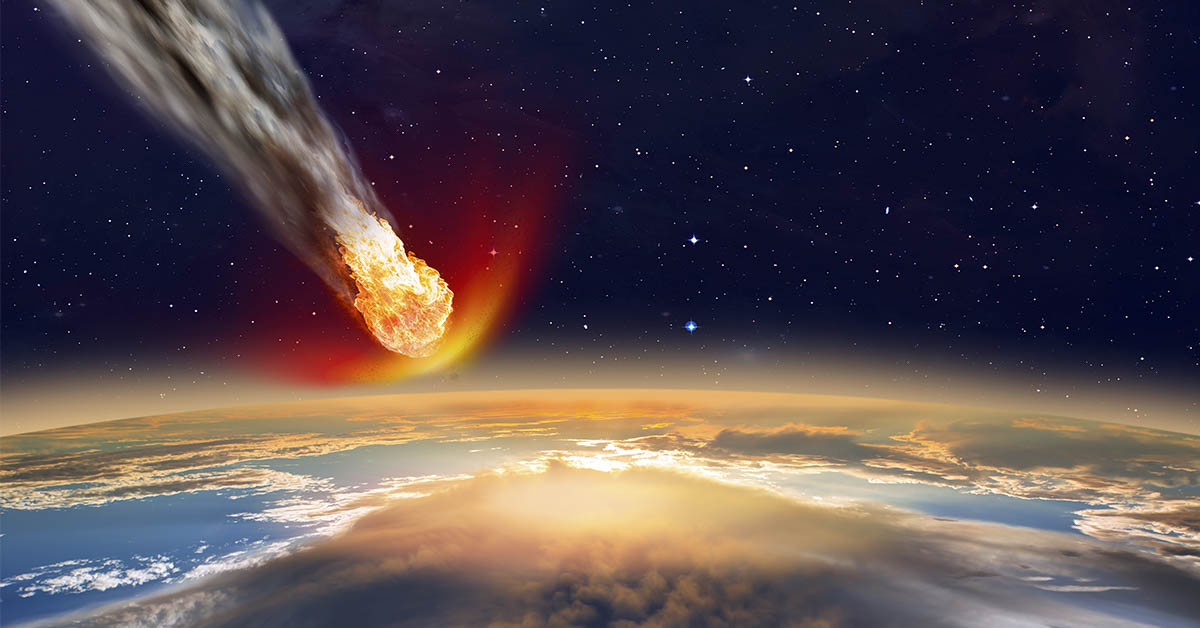NASA has just made a rather exciting, but nerve-wracking discovery. An asteroid is hurtling toward the earth’s atmosphere. No reason to panic though as it will only skim the surface of the atmosphere at roughly 2500 miles from the earth’s surface. On an astronomical scale, this is a very close have. Still, interestingly, 2023 BU as the space rock has been named is only the fourth nearest of over 35,000 past and future earth approaches recorded and estimated between 1900 and 2200.
At 12.4 and 27.8 feet across, the 2023 BU is small in size for an asteroid

Not only is the asteroid small in size, measuring only 12.4 and 27.8 feet across, but NASA’s Center for Near Earth Object Studies (CNEOS) also shows that they’ve calculated its orbit pretty accurately. This means it is definitely not predicted to collide with our planet.
Measuring in at half the size of the Chelyabinsk Meteor, which actually did hit the earth’s surface in 2013, the space rock was initially discovered last Saturday by astronomer Gennadiy Borisov at the MARGO Observatory in Crimea. The Chelyabinsk meteor collided on Russian soil, injuring 1600 people due to the explosion’s shockwave. For comparison, the blast was estimated to be 20 times stronger than the Hiroshima atomic bomb.
The bus-sized asteroid will grace our atmosphere with its brilliance on Thursday
The asteroid will first be visible from the tip of South America. Zipping past at an altitude of roughly 2500 miles above the ground. That is a pretty close shave in relative astronomical terms. It will even pass geostationary satellites on its way. There is nothing to fear, however, given the trajectory, size, and slow speed it will be traveling. Most asteroids pass beyond the distance of the moon at 236121 miles away, which makes this one’s journey extremely close in comparison.
Read: NASA: Asteroid Could Still Hit Earth in 2068
For peace of mind, there is no risk to us anyway
Even if it hit Earth, due to its size alone, the asteroid would most likely burn up in the sky on its journey down if it happened to collide with earth. The asteroid will be traveling at an estimated 33,300 miles per hour, which is “just barely over escape velocity.” The speed at which an object must be moving to break free from the earth’s gravitational pull.
The closest encounter in 300 years, this is not an event you can risk missing. The Virtual Telescope Project will allow us to view the asteroid passing. The VTP is a set of robotic telescopes based in Ceccano, Italy that is accessible online to the public, making the experience possible from your very own sofa. You can support the VTP here.
Keep Reading: Earth’s Spinning Inner Core Recently Paused Then Flipped Its Direction
Sources
- “No, a Huge Asteroid Isn’t Going To Hit Earth Tomorrow.” News Week. Aristos Georgiou. January 25, 2023
- “Asteroid Larger Than Empire State Building Is Heading Towards Earth.” Lad Bible. Ali Condon. January 24, 2023
- “Huge asteroid to pass by Earth in close call.” News. Chloe Whelan. January 25, 2023

